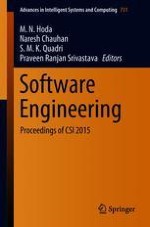This book presents selected proceedings of the annual convention of the Computer Society of India. Divided into 10 topical volumes, the proceedings present papers on state-of-the-art research, surveys, and succinct reviews. They cover diverse topics ranging from communications networks to big data analytics, and from system architecture to cyber security. This book focuses on Software Engineering, and informs readers about the state of the art in software engineering by gathering high-quality papers that represent the outcomes of consolidated research and innovations in Software Engineering and related areas. In addition to helping practitioners and researchers understand the chief issues involved in designing, developing, evolving and validating complex software systems, it provides comprehensive information on developing professional careers in Software Engineering. It also provides insights into various research issues such as software reliability, verification and validation, security and extensibility, as well as the latest concepts like component-based development, software process models, process-driven systems and human-computer collaborative systems.
